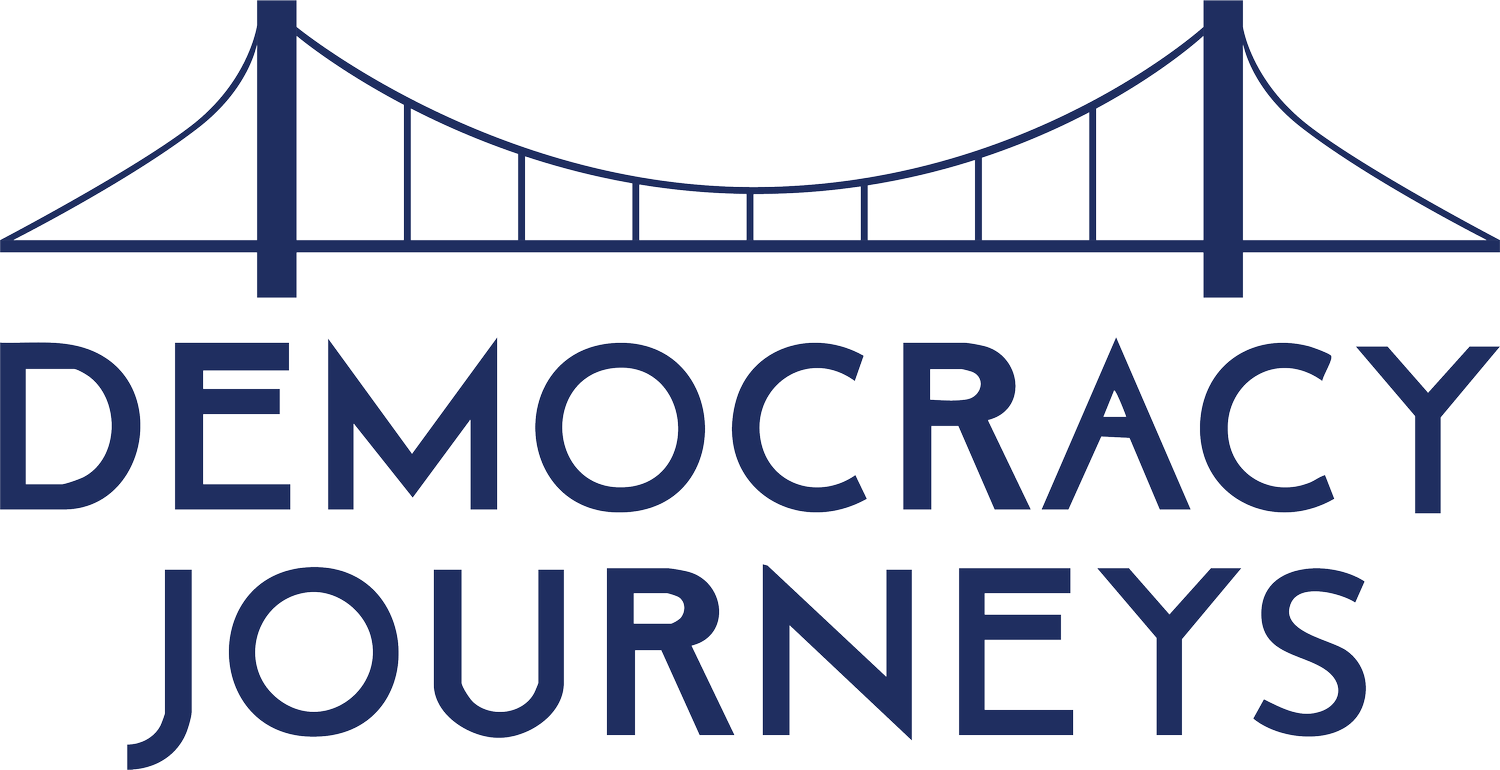Lessons Americans Can Take from Armenia’s Velvet Revolution
Families take part in mass protests in Armenia’s Republic Square. (BBC, 2018)
In the spring of 2018, Armenians achieved their Velvet Revolution, a peaceful movement that in a mere 40 days overturned Armenia’s previous leader, Serzh Sargsyan, from claiming a third and illegal term in power. What began as a small group of citizens walking across Armenia grew into a nationwide, nonviolent movement. The Velvet Revolution, led by journalist-turned-politician and activist, Nikol Pashinyan, wasn’t just about one leader or one moment. Armenia’s Velvet Revolution was about reclaiming the belief that people, united and peaceful, could demand accountability and make change.
For Americans reflecting on the state of democracy at home, Armenia’s Velvet Revolution offers powerful lessons not only about political transformation, but about the power of the everyday citizen and the everyday work it takes to have a democracy.
From the many conversations I had with our Democracy Journey’s Armenian experts and key speakers, there are three lessons I took as being key in making Armenia’s Velvet Revolution widespread and ultimately successful. Change begins with small and individual acts of civic courage, nonviolence is a strategic force, and for resistance to be successful it must be accessible for all to participate.
1. Change Starts with Civic Courage
When Pashinyan and a small group of supporters began their march across the country, few believed it would matter. They had no political power, no backing from the elite, and no media following them. What they had was conviction. They walked across Armenia, speaking with anyone they met along the way and in doing so, inspired tens of thousands to join. What started small, soon swept across the country and highlights how small, but meaningful acts of resistance are inspiring and encouraging to others.
In the U.S., where polarization often makes civic engagement feel futile, Armenia’s story reminds us that courageous acts of participation, however small, can ripple outward. Think a letter to the editor, a town hall meeting, or a local organizing effort still matter. Democracy depends on ordinary people believing their actions, in their communities, count.
2. Nonviolence Is a Strategic Force
The Velvet Revolution was strikingly peaceful. Despite frustration, exhaustion, and provocation by police, protesters remained disciplined in their nonviolence. Students blocked streets with song and dance. Teachers, veterans, and priests joined arms. The movement’s restraint and creativity built legitimacy and drew in broad support.
Americans can take note: nonviolent civic pressure is not passive; it’s powerful and often highlights the fragility in autocracies. In a moment when political discourse often rewards outrage, Armenia joins the many peaceful movements that shows us that empathy and discipline can be more effective than violence. What we have seen across the country with “No Kings” day protests and beyond highlight how capable Americans already are to engage in this type of work.
3. For Resistance to be Effective it Must be Accessible
In Armenia, the Velvet Revolution expanded what protest could look like, ensuring everyone could take part. The movement’s leaders understood that not all citizens could join marches or demonstrations — so they made participation accessible. Older Armenians and women who stayed at home were encouraged to bang pots and pans from balconies, honk car horns, and clap at 8:00 p.m. each night in solidarity. Others created everyday disruptions such as blocking bridges, slowing traffic, moving dumpsters into the street; small acts that collectively made it harder for those in power to carry on as usual. When ordinary life became inconvenient for the elite, pressure mounted and ultimately, the country’s leader was forced to the negotiating table.
The same principle applies in America. Strategic, creative disruption works. Democracy isn’t only shaped in the streets; it’s built through persistent civic pressure. That can mean boycotting businesses that fund harmful agendas, calling representatives regularly, or even using art and performance to spark dialogue. There’s no limit to how creatively citizens can demand accountability or how powerful those small acts can become when multiplied.
After the revolution, Armenians faced a hard truth familiar to many democracies: the work doesn’t end when the chants quiet down. Building institutions, reforming systems, and sustaining trust is a longer, more complex process than protest.Still, the Velvet Revolution’s enduring legacy is that Armenians felt ownership over their democracy. They proved that politics is not a spectator sport.
Even six years later, Armenia continues to wrestle with challenges — from regional conflict to political growing pains. Yet the spirit of 2018 endures: the belief that people, not power, define a nation’s future. For Americans, the Velvet Revolution offers a humbling and inspiring truth: a healthy democracy takes work and is not guaranteed.
At Democracy Journeys, we travel to places like Armenia not only to learn about history, but to witness living examples of courage, creativity, and community in action. On our Armenia Journey we will meet with the architects of the Revolution, with the activists turned parliamentarians, and with everyday citizens that took up the cause. The story comes to life and inspiration is found along the way.
For the United States, where cynicism too often overshadows possibility, Armenia’s example is a call to reinvest in democratic imagination. Hope is not naïve; it is strategic. It’s what sustains people through setbacks and inspires communities to act with purpose. The Velvet Revolution reminds us that democratic renewal, anywhere, begins with people who refuse to give up on one another, and small acts of resistance that add up to make big change.
Journey Lead

